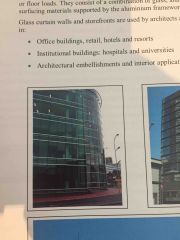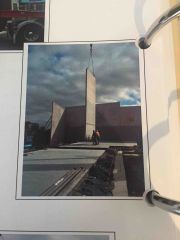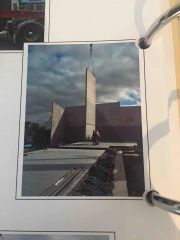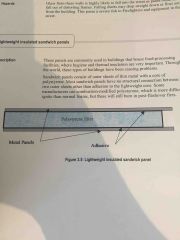![]()
![]()
![]()
Use LEFT and RIGHT arrow keys to navigate between flashcards;
Use UP and DOWN arrow keys to flip the card;
H to show hint;
A reads text to speech;
38 Cards in this Set
- Front
- Back
|
Main structural features for a roof |
Ridges Rafters Hip rafters Jack rafters Purlins |
|
|
2 signs of structural collapse in commercial structures |
Sagging beam Cracked walls |
|
|
2 ways fire spread in domestic stuctures |
Radiant heat Ember transfer |
|
|
2 signs of structural collapse in domestic structure |
Sagging floors Uneven angles of wall |
|
|
2 Precautions for moving safely on wooden stairs |
Stick close to wall Check your footing |
|
|
Explain one safety precaution you would take for moving safely on a wooden floor |
Walk on floor joist |
|
|
Explain one safety precaution for moving around in ceiling spaces |
Watch out for electrical cables |
|
|
Two safety precautions for moving around the roof |
Walk on purlins Walk on ridges |
|
|
Main structural features for ceilings |
Ceiling joist Ceiling battens Roof trusses Solid dwanging |
|
|
Main structural features for wooden floors |
Floor joist Void space Piles Bearers |
|
|
Main structural features for stairs |
String Tread Riser |
|
|
List 3 Hazards to firefighters and equipment created by glass |
Lacerations Falling glass Damaged equipment ( burst hose) |
|
|
Commercial fixed fire systems fall in to two categories. Name two and briefly explain what the Difference is |
Passive Fire-resistant construction Exit signs
Active Fire/smoke detectors Sprinklers Fire alarms |
|
|
Name four elements of a detection system and briefly explain what each one does |
Heat detection systems Smoke detection systems Flame detection systems Gas detection systems |
|
|
Briefly describe how a building hydrant system (riser) works and the advantage of using one in a high rise |
Water is drawn from the in-ground public water mains and pumped into the system by the appliance. Much more efficient for fighting fires in high rise buildings |
|
|
Key safety for ladders Protective clothing |
Helmets and gloves |
|
|
Two Key safety for distance from heat source ( ladders) |
Don't position on heat source
Some aluminium ladders have temperature indicators |
|
|
One Key safety for overhead obstacles (ladders) |
Avoid any obstacles
|
|
|
1 Key safety for positioning ladders |
Pitched to right hand side of window. |
|
|
Key safety for stability (ladders) |
Pitch ladder correctly before climb Have firefighter at its heel for stability |
|
|
A ladder has dropped and the round is broken what is the first thing you should do with a faulty ladder? |
Fill out defect tag and attach the tag to the ladder |
|
|
Describe two examples of when a short ladder should be used |
1st floor Creating portable dams |
|
|
Briefly explain two things that ladder tests are designed to identify? |
If rounds don't move more than 5mm To ensure it is safe to use |
|
|
Rescue ladders are tested at three further times. Explain the three below |
Annually After use After repair |
|

Name building type and hazard |
Glass curtain walls
Falling glass |
|

Name building type and hazard |
Tilt slabs
Inwards/outwards collapse |
|

Name building type and hazard |
Tilt slabs
Inwards/outwards collapse |
|

Name building type and hazard |
Sandwich panels
Thick dark smoke |
|
|
5 causes for hose deterioration |
Shock Abrasion Mildew Oil Acid |
|
|
Ladder parts HEAD and use |
Top of ladder |
|
|
Ladder parts HEAD and use |
Top of ladder |
|
|
Ladder parts HEAD PULLEY use |
Carries extending line |
|
|
Ladder truss use |
To stabilise the flex of the ladder |
|
|
Extension line ladder use |
To extend ladder |
|
|
Working face ladder use |
The side you climb |
|
|
Ladder round use |
Used to climb up/down the ladder |
|
|
Pawls ladder use |
To activate height of the ladder |
|
|
Non skid shoes use |
To prevent slipping |

